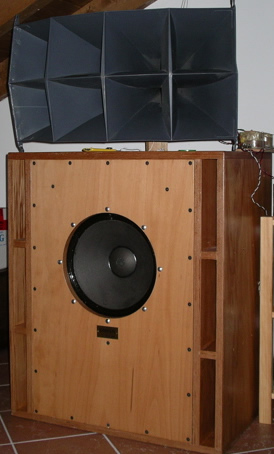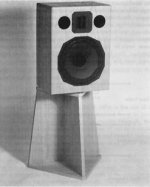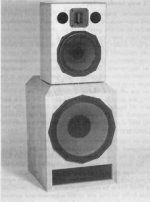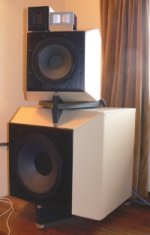I think there are at least two views being discussed here that are actually opposites i.m.h.o.
One is a spiced up sound, that on first impression sounds dynamic but isn't a good representative of the original input signal. It may give the impression of dynamics but it is not unlike the extra's one can add to a signal to give that same false sense of dynamics. BBE processing comes to mind. You can't mimic what BBE does with regular EQ as it is a dynamic EQ but it exaggerates the dynamics in a song. What it does is boosting at a set low frequency, and also a set higher frequency based on what's happening (level) in between in the mid frequencies. Not real dynamics that are present in a song but it does make for a live feel on drums for example. Won't work as well on every piece of music.
The other route seems to have more to do with being faithful to the recording but having large capacity (sd or otherwise) available to do so. In my opinion that route would also give a dynamic sound if the timing of that signal is right or close enough to it.
Some people like to hear their music spiced up, no doubt about it. Those would be well served with the first option, be it with so called dynamic sounding drivers or throwing in other bells and whistles. It probably won't work on every song or genre.
I'd rather spend more time on the timing of the signal coming out of the speaker and get that dynamic sound that way, as that will actually make every piece of music sound better. Get the timing right and the harmonics, already present in the music, will come out right and will make for a very pleasant musical experience. Different ways to get there, I'm sure.
One is a spiced up sound, that on first impression sounds dynamic but isn't a good representative of the original input signal. It may give the impression of dynamics but it is not unlike the extra's one can add to a signal to give that same false sense of dynamics. BBE processing comes to mind. You can't mimic what BBE does with regular EQ as it is a dynamic EQ but it exaggerates the dynamics in a song. What it does is boosting at a set low frequency, and also a set higher frequency based on what's happening (level) in between in the mid frequencies. Not real dynamics that are present in a song but it does make for a live feel on drums for example. Won't work as well on every piece of music.
The other route seems to have more to do with being faithful to the recording but having large capacity (sd or otherwise) available to do so. In my opinion that route would also give a dynamic sound if the timing of that signal is right or close enough to it.
Some people like to hear their music spiced up, no doubt about it. Those would be well served with the first option, be it with so called dynamic sounding drivers or throwing in other bells and whistles. It probably won't work on every song or genre.
I'd rather spend more time on the timing of the signal coming out of the speaker and get that dynamic sound that way, as that will actually make every piece of music sound better. Get the timing right and the harmonics, already present in the music, will come out right and will make for a very pleasant musical experience. Different ways to get there, I'm sure.
Thanks for that wesayso !
I havent got much paitence with typewriting, so I tend to take small doses.
Your post explains a lot 🙂
I havent got much paitence with typewriting, so I tend to take small doses.
Your post explains a lot 🙂
Could be. There are cases where a FR driver sounds better with a few dB of cut, and the cut is also noticeable (as a compromise). Where time domain effects are involved. For example, after the driver narrows, it takes a brief detour back to wide and sees more baffle and walls.dumptruck said:nothing that complex is to blame at all.
Last edited:
I never understood the full range driverthing. They exists like ghosts and aliens.
You just cant get one.
If you build horns like Nelson Pass or Duelund, you can get close.
But no cigar
You just cant get one.
If you build horns like Nelson Pass or Duelund, you can get close.
But no cigar
Personally, I have stopped taking opinions seriously. Without a confirming listen, all bets are off. That means also if I'm totally wrong, why should I care if I like what I hear?
Yes, It's amazing, all quality audio enthusiasts seem to perceive and enjoy certain characteristics in their own unique way.. On a few occasions a guest has heard my system and couldn't understand why I was listening at 2m, then move the chair back to 4m and say, this is how I like to listen.. I would characterise 4m listening as -in the room sound- and 2M as -a window into the recording space-.
I believe that all kinds of systems can be good as long it's well designed.
Bad comments of this and that system comes down to DIY mania and fixation on certain draw backs and of course personal choices.
Yes, but I believe some inherent problems can't be designed out and the issue might bother one person but not the other..
No bad comments, just describe personal experience as it stands to date.. Some thoughts will change with more experience..
I think Allen is very respectful toward the posts and I fully expect to learn from him..
Is slam the same thing as dynamics? I was very interested in the thread about Slam..
Lots of power for dynamics and effortlessness and you don't need to turn it up loud.. I want to save my hearing as well..
For Dynamic horns I've heard and also much less noticeable perception of the diffraction issue discussed-Technics E-100 and SB-1000
The bass sound from EdgarHorn seismic subwoofer is hard to believe, if you ever get a chance to listen.. I could picture the bass player right in the room and efficiency, wow.. But size of a large refrigerator..
Martinelli Horns with TAD 1101H woofers, really good dynamics..
A guy in Oakville Ontario makes a Full exponential horn system.. 4 cabinets per side, huge sub bass bins. 1w and we were away in dynamic heaven.. His basement is about 30x50 feet..
Nautilus 801's driven with 4 Bryston 7B's.. That was my system for a 2 year period.. Talk about Slam..😱
Lots of power for dynamics and effortlessness and you don't need to turn it up loud.. I want to save my hearing as well..
For Dynamic horns I've heard and also much less noticeable perception of the diffraction issue discussed-Technics E-100 and SB-1000
The bass sound from EdgarHorn seismic subwoofer is hard to believe, if you ever get a chance to listen.. I could picture the bass player right in the room and efficiency, wow.. But size of a large refrigerator..
Martinelli Horns with TAD 1101H woofers, really good dynamics..
A guy in Oakville Ontario makes a Full exponential horn system.. 4 cabinets per side, huge sub bass bins. 1w and we were away in dynamic heaven.. His basement is about 30x50 feet..
Nautilus 801's driven with 4 Bryston 7B's.. That was my system for a 2 year period.. Talk about Slam..😱
Last edited:
Now that we've apparently gotten past "definitions", it seems that we can might answer the man's questions (noting the exact models of loudspeakers that he referenced, below...
Clearly, the loudspeakers that you referenced are clearly on the more efficient side.
From another thread:
a) low modulation distortion, and
b) very low compression distortion
Both of these are present in high efficiency designs, such as horns (also called waveguides), and large driver surface area vented bass boxes.
To get the sound "out of the box", I think that suppression of early and strong first reflections is required within 0.7-4 ms of the loudspeaker direct sound, including ceiling and floor bounce. See Corner Horn Imaging FAQ - diyAudio
Chris
I am trying to identify the parameters that make a speaker sound open and dynamic.
In recent years I have spotted a trend of more CD, horns / waveguides in DIY and commercial speaker, professional bass drivers are also widely used.
Speakers that's come into my mind are
- The JBL type of speaker with a 15" [woofer] and horns for the mid and high.
https://www.youtube.com/watch?v=lwAgQOm9cqk&feature=youtu.be
An externally hosted image should be here but it was not working when we last tested it.
- Tekton Pandragon
An externally hosted image should be here but it was not working when we last tested it.
- Emerald Physics
- Jean Hiraga OnkenMS3 Isobaric Monitor
- Unique (non-rectangle) milled and shaped enclosure to reduce resonances
- 10 liter net volume stacked MDF enclosure with applied special finishes
- Rear Vented Isobaric tuned to 29 Hz
- Dual 7" Coated Paper woofers with Advanced Motor Design
- Copper binding posts
- 1.2" Triple Chamber Silk Dome Tweeter with low resonant frequency
- Typical 88dB sensitivity (2.83V/m)
- Typical room response -3dB @ 27Hz
- Impedance: 5 ohms
- Crossover 4th order @ 1kHz in model with crossover
- Recommended amplifier Range 50-150 Watts
- Retail price $3,000.00/pr without crossover for biamping with the DSP2.4 active digital crossover.
- Retail price $3,700.00/pair with internal passive crossover for single amp use.
- Optional 24.5" stands available
- Dimensions: 14.875H x 11.250W x 12.5D including binding posts. (Width at max point)

All are speakers with big drivers and sensitive around 95 db. Another trend is the use of DSP and also the emerge of OB speakers, even Jamo has one (-:
The reason I want to discuss this is because I want to own a pair of speakers that can surprise. When I listen to Pink Floyd "The Final Cut" I want to jump in my seat when there is a bomb going off and at the same time enjoy the big soundstage painted on a black velvet on the track "Southampton Dock"
Today I have a pair of Dana 980. The speakers are 2 1/2 way. With two scan speak 6 1/2" drivers and a 1" soft dome also from scan speak.
The are well built: the sound is good but the sound stays "in the box".
An externally hosted image should be here but it was not working when we last tested it.
So what do you think make a speaker dynamic? Please join the discussion.
--
Med venlig hilsen / Best regards
Martin H. Andersen
System developer
Clearly, the loudspeakers that you referenced are clearly on the more efficient side.
From another thread:
I would add that the most important factors for dynamic sound are:1) Smooth and controlled SPL polars within about 30 to 45 degrees of centerline of the loudspeaker (half angle) without disturbances or nearfield diffractions in coverage
2) Avoidance of illuminating the floor or ceiling with too much acoustic energy (this implies controlled directivity)
3) Absence of resonances or other disturbances in the radiated sound field by the drivers, loudspeaker boxes/horns, or the room in which the loudspeaker is reproducing
4) Absence of nearfield reflections that disturb the direct sound within about 2 ms of the direct sound arrival, especially from diffractions off the loudspeaker box itself
5) Room reflections from the room greater than 20 ms that are diffuse
...
7) Absence of driver distortions, such as harmonic distortion, modulation distortion (including FM and AM distortion), compression distortion, and impulse distortion
8) If stereo or multichannel, loudspeakers that match their output phase across the audible bands and their absolute phase changes are controlled and slowly changing
a) low modulation distortion, and
b) very low compression distortion
Both of these are present in high efficiency designs, such as horns (also called waveguides), and large driver surface area vented bass boxes.
To get the sound "out of the box", I think that suppression of early and strong first reflections is required within 0.7-4 ms of the loudspeaker direct sound, including ceiling and floor bounce. See Corner Horn Imaging FAQ - diyAudio
Chris
Last edited:
I'm wondering if low-order harmonic distortion at higher levels makes a speaker sound "dynamic". A lot of people say Lowther/Fostex drivers are dynamic, and yet, from what I can tell, they hit distortion rather early. The distortion is mostly low-order, so sounds benign enough.
A distorting driver sounds louder than a clean one, though, so the drivers are working like expanders (opposite of compressors).
FWIW I'd take fairly efficient and plenty of thermal mass so that short-term power spikes don't cause any temperature fluctuations.
Of course, lots of clean amplifier power is a must.
Chris
A distorting driver sounds louder than a clean one, though, so the drivers are working like expanders (opposite of compressors).
FWIW I'd take fairly efficient and plenty of thermal mass so that short-term power spikes don't cause any temperature fluctuations.
Of course, lots of clean amplifier power is a must.
Chris
And diffraction? A source located within the room is going to meet both at some point if it had any control to begin with.To get the sound "out of the box", I think that suppression of early and strong first reflections is required
A good baffle will minimise or postpone these disturbances, which means two things. It should start the sound toward where it will be beneficial, and hold it there until it is safe to let go.
For comparison, a corner poimt source (ideal) removes the need of diffraction as it removes the need of a baffle. It has the longest delay before reflections. It produces diffuse room coverage by spreading a clean wavefront. So by directing the sound right friom the beginning the room can be to some degree removed as well.
Last edited:
I'm wondering if low-order harmonic distortion at higher levels makes a speaker sound "dynamic". A lot of people say Lowther/Fostex drivers are dynamic, and yet, from what I can tell, they hit distortion rather early. The distortion is mostly low-order, so sounds benign enough.
A distorting driver sounds louder than a clean one, though, so the drivers are working like expanders (opposite of compressors).
Chris
This could be argued the other way round.i.e. lightweight cones are more dynamic, but tend to distort. So it is not that they sound more dynamic because they distort, but they are more dynamic and they distort.
A standard 2 way smallish box producing bass in sufficient quantities has to have a relatively heavy cone, and never to my ears sounds truly dynamic, even if it has really low levels of distortion.
Why would a lighter cone be more dynamic?
Because it has less inertia and responds quicker to an impulse. (This is taking the definition of "sounds more dynamic" to be closely related to transient response)
Thermal Compression
I recall that Earl Geddes said that in a home setting (assuming that he means small rooms) that you could not get a 15 inch driver to have thermal compression even if you tried. That, of course, is not true of very large rooms (i.e, clubs) at very high output levels.
If Earl is correct, then thermal compression would not describe the lack of dynamics that people may notice, assuming their observations were made in a home setting. This statement may not hold for the situation in which someone is trying to reproduce bass with a tiny speaker.
Retsel
I recall that Earl Geddes said that in a home setting (assuming that he means small rooms) that you could not get a 15 inch driver to have thermal compression even if you tried. That, of course, is not true of very large rooms (i.e, clubs) at very high output levels.
If Earl is correct, then thermal compression would not describe the lack of dynamics that people may notice, assuming their observations were made in a home setting. This statement may not hold for the situation in which someone is trying to reproduce bass with a tiny speaker.
Retsel
You're darn tootin'! 😀diyaudio= if you dont have 15 inch drivers and 300L cabinet, your sound sucks. 🙂
Gotta say, I'm glad to see that evolution. Seems like when I joined this sections was all wimpy MTM projects and skinny towers.
 Nice to know we have grown up.
Nice to know we have grown up.Nice to know we have grown up.

Now...how about a high efficiency/horns forum?

You're darn tootin'! 😀
Gotta say, I'm glad to see that evolution. Seems like when I joined this sections was all wimpy MTM projects and skinny towers.Nice to know we have grown up.
..er, um..
..The John Blue JB3...
..They sounded big, very big.
"..no mas pantalones." 😛
Attachments
..er, um..
"..no mas pantalones." 😛
Wow, that must be the fastest driver in the world;o) It's so fast that the drumbeat arrive before drumstick hit the skin. It's so fast that when one bought it, it went out of the room, even before bringing it home. If by chance they stay in the room, they are so small that it's nearly impossible to see them, never mind hearing…
(Gotta have some more red wine:O)))
- Status
- Not open for further replies.
- Home
- Loudspeakers
- Multi-Way
- Discussion - What makes a speaker sound dynamic



